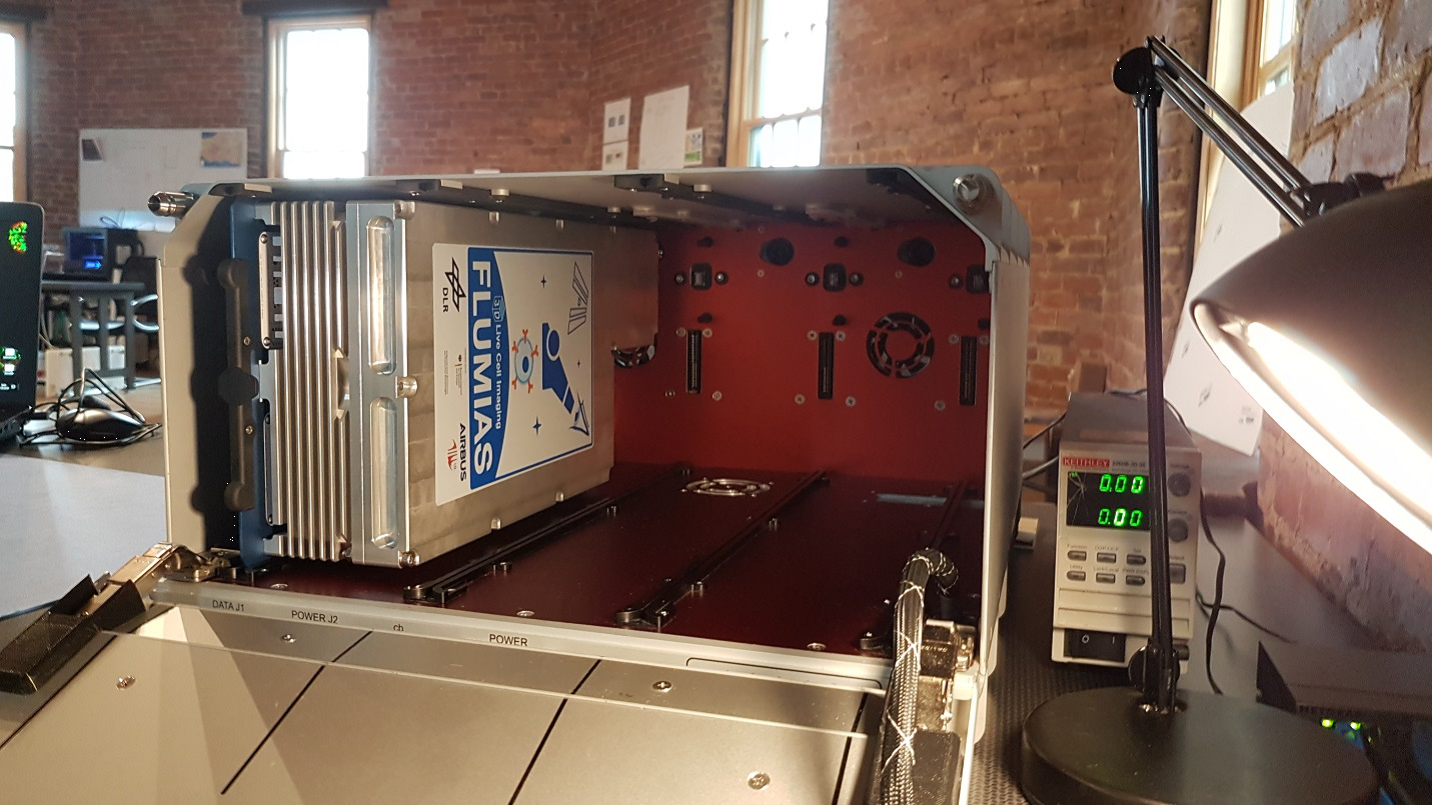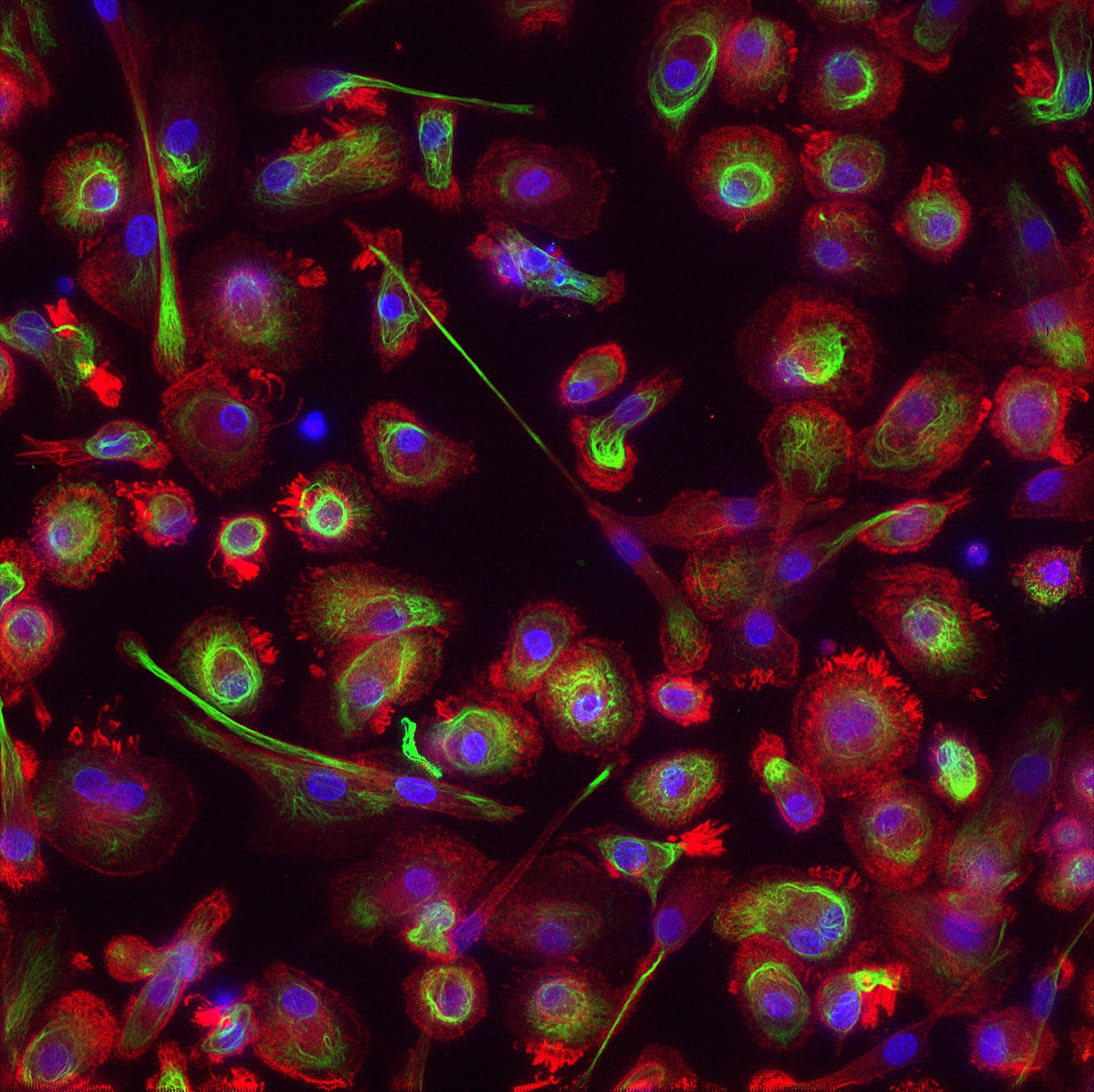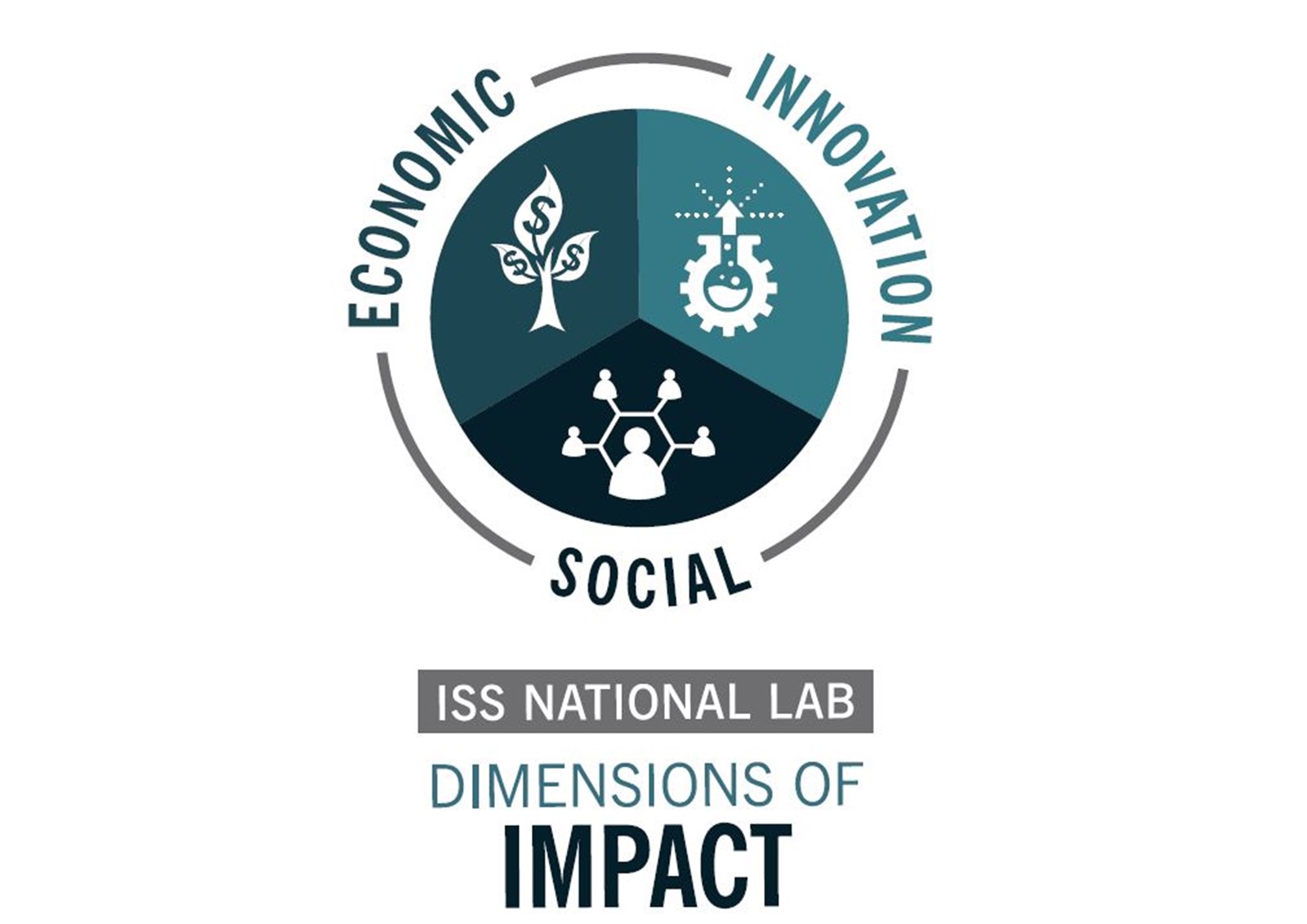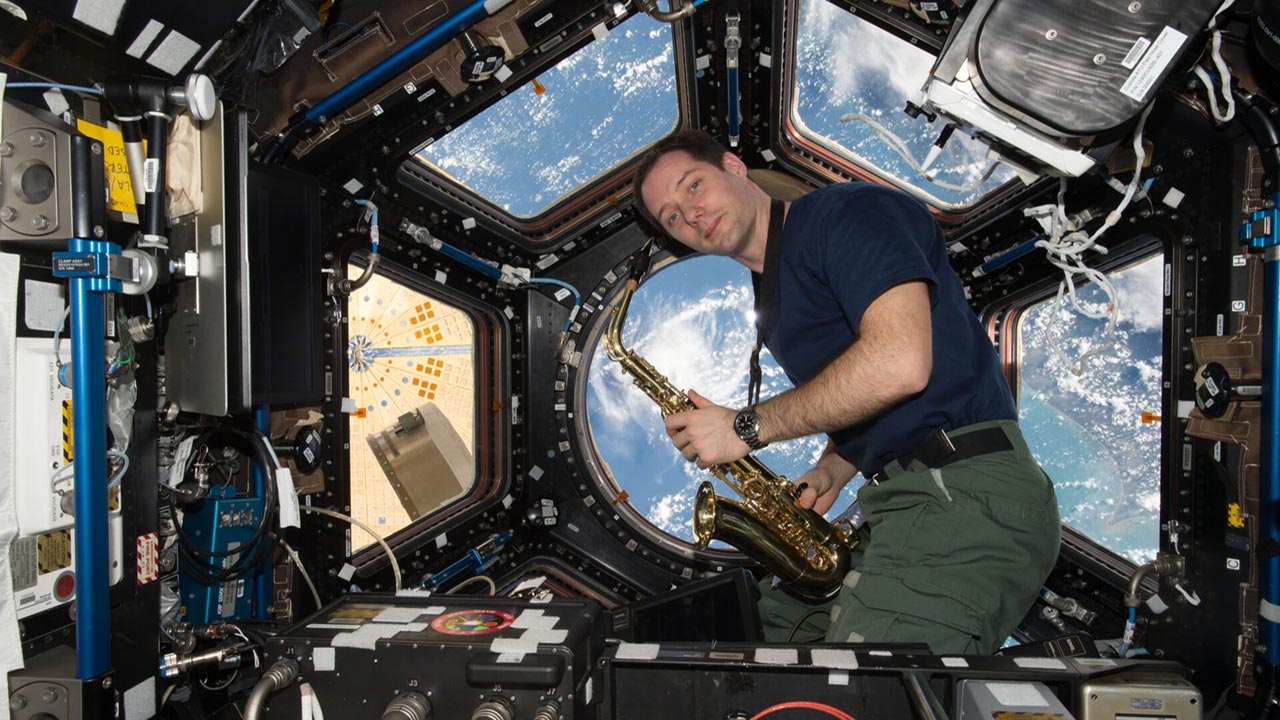A miniaturized fluorescence microscope could have a big impact on biological studies on the International Space Station. An investigation from Airbus Defence and Space called FLUMIAS-DEA, which launched on SpaceX CRS-15, aims to demonstrate new miniaturized fluoresence microscopy technology onboard the space station. Florescence microscopy allows researchers to observe changes in living cells over time and in 3D, which can provide important insights into dynamic cellular processes.

FLUMIAS-DEA miniaturized fluorescence microscope loaded in TangoLab-2
Media Credit: Image courtesy of Airbus
For the demonstration, the research team will observe samples of fixed (dead) cells and live cells using the miniaturized fluorescence microscope, which fits in a volume of seven 10-cm cubes inside Space Tango’s TangoLab. This is much smaller than a standard fluorescence microscope, which is typically the size of a desk.
A new space station facility, FLUMIAS-ISS, is currently being developed for potential flight as early as 2020 and would enable more complex biological studies in microgravity. A compact fluorescence microscope would be valuable not only for research on the space station but also on the ground for use in remote areas and disaster conditions.







